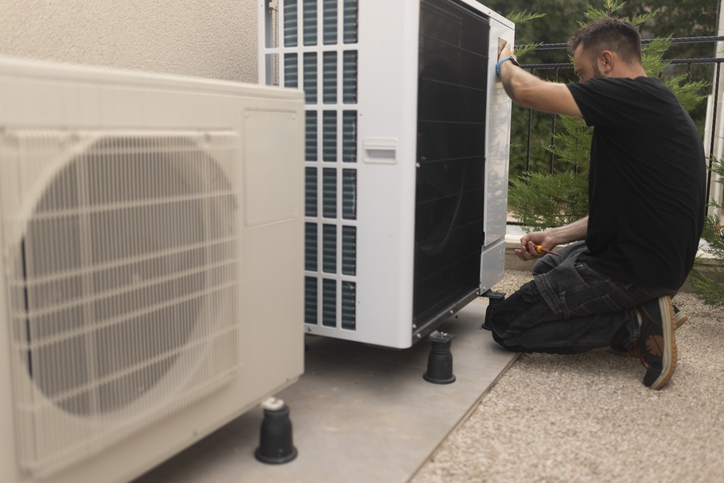Replacing a heating system is a significant investment, but it can lead to long-term savings, improved comfort, and better energy efficiency. Understanding the primary cost factors in heating replacement can help you prepare a realistic budget and make informed decisions. This guide will discuss crucial considerations, from system size and type to installation fees and long-term maintenance, ensuring you get the best value for your investment.
1. System Type: Choosing Between Different Heating Options
Heating upgrade costs depend heavily on the type of system you select. Furnaces, heat pumps, and boilers vary significantly in price. Furnaces, for instance, are generally more affordable upfront, but heat pumps offer both heating and cooling, making them versatile options. Boilers, though often more expensive, provide consistent and comfortable heating, especially in colder climates. Evaluating each option’s initial costs, energy efficiency, and climate suitability can help you choose the best fit for your home and budget.
2. Sizing the System Appropriately for Your Home
Choosing the right system size is essential for both efficiency and cost. A unit that is too small will struggle to heat your home adequately, leading to increased wear and higher energy bills. Contrarily, an oversized unit may lead to frequent on-off cycling, reducing its lifespan and wasting energy. To determine the correct size, consider having an HVAC professional conduct a load calculation based on your home’s square footage, insulation quality, and layout. Proper sizing confirms a balance between comfort and cost efficiency.
3. Energy Efficiency Ratings: Long-Term Savings vs. Initial Cost
When replacing your heating system, pay close attention to energy efficiency ratings. High-efficiency units typically cost more upfront but can lead to substantial savings on monthly energy bills. Look for units with high Annual Fuel Utilization Efficiency (AFUE) or high Heating Seasonal Performance Factor (HSPF) ratings for furnaces and heat pumps relatively. Investing in an energy-efficient model may mean higher initial costs, but it reduces your long-term energy expenses, helping you recover your investment over time.
4. Installation Costs: The Role of Labor and Complexity
Installation expenses are a crucial part of the overall heating unit replacement budget. Costs vary based on the system’s complexity, home accessibility, and labor rates. Older homes or homes with unique configurations may require additional work, such as updating ductwork or ensuring proper ventilation, which can add to the cost. Researching local HVAC contractors, reading reviews, and getting multiple quotes can help you find quality installation services at a fair price.
5. Ductwork and Insulation Upgrades for Optimal Efficiency
If your home’s ductwork is outdated or has leaks, you may need to factor in the cost of repairs or upgrades. Duct issues can lead to air leakage, causing heat loss and inefficiency. Similarly, poor insulation can make it difficult for your new heating system to maintain a constant temperature, forcing it to work harder. Upgrading ductwork and improving insulation can increase system efficiency, reduce energy bills, and enhance comfort. While these upgrades involve added costs, they significantly improve system performance and longevity.
6. Warranty and Maintenance Considerations for Long-Term Savings
Extended warranties and maintenance plans can add to upfront costs but provide valuable protection for your heating system investment. Manufacturer warranties typically cover parts, but labor might only be included if you purchase an extended warranty through the installer. Regular maintenance, often included in service plans, keeps the system running efficiently, prevents major repairs, and can extend the unit’s lifespan. Comparing different warranty and maintenance packages can help you find a plan that suits both your budget and long-term needs.
7. Financing and Incentive Options for Managing Upfront Costs
Many HVAC companies and financial institutions offer financing options to spread out the costs of HVAC replacement. Low-interest loans or financing programs with manageable monthly payments can make a large upfront cost more budget-friendly. Additionally, check for any rebates or tax credits available for energy-efficient systems, which can help reduce overall expenses. These incentives can significantly offset the initial investment and make upgrading to a modern, efficient system more accessible.
8. Future Energy Costs and Environmental Impact
Budgeting for a heating upgrade should also account for potential energy savings and environmental benefits. Energy-efficient systems not only reduce your bills but also lower your home’s carbon footprint. High-efficiency systems use less fuel, which can result in long-term savings, especially as energy prices fluctuate. Choosing an environmentally friendly option can provide both financial savings and a more sustainable way to heat your home, making it a wise long-term investment.
Replacing an old heating system involves several key considerations, from selecting the right type and size to factoring in efficiency, installation, and potential upgrades. Budgeting thoughtfully for heating replacement by assessing these factors can help you make the most of your investment while enjoying a comfortable, efficient home. Careful planning guarantees that your new system will provide reliable warmth for years to come without causing unexpected financial strain.
Ready to upgrade your heating system? Contact NTX Plumbing today for expert advice and quality heating replacement services. Call us to schedule a consultation and get a personalized quote!





